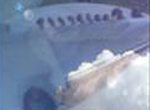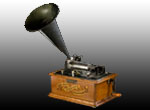xysoom


Registrato: Mag 15, 2020
Messaggi: 1676
|
 Oggetto: Gold Standard Care of Chronic Scrotal Pain Oggetto: Gold Standard Care of Chronic Scrotal Pain
Inviato: 08-04-2022 2:42:13 |
 |
Gold Standard Care of Chronic Scrotal Pain
Scrotal pain is an umbrella term referring to a variety of problems causing discomfort or pain in the scrotum and may be caused by problems with the testis or other contents of the scrotum, including ductus deferens and epididymis.To get more news about Chronic epididymitis case, you can visit our official website.
Chronic scrotal pain (CSP) is defined as constant or intermittent pain in the scrotum lasting for more than three months.1 CSP does not involve only testicular pain, as there may be pain involving the epididymis, vas deferens or adjacent paratesticular structures.
It is important that, on first presentation, any scrotal pain, regardless of pain severity, is assessed and managed on the principles of an acute scrotum, due to time-sensitive conditions such as testicular torsion.1
The patient with acute scrotal pain is the urologist’s acute abdomen. Therefore, a thorough medical history and objective examination in order to make a tentative diagnosis (age, sexual medical history and duration, severity, description of pain) is essential. Para clinical examinations are sometimes necessary to support a clinical diagnosis. The balance is between the potential risk of exploring or have a conservative treatment. The typical acute are reviewed in the following: torsio testes or torsio appendicis, epididymitis or other infection (epididymo-orchitis, Fournier's gangrene, inflammation (dermatitis, vasculitis, cellulitis), ischemia (incarcerated hernia), trauma, medication (Amiodarone) or be referred pain (appendicitis, aneurysm, ureteral stones) Some recognized causes of scrotal pain include spermatocele and varicocele, hydrocele, infected hycrocele and testis tumor.1
Another pathophysiological cause of CSP revolves around wallerian degeneration in spermatic cord nerve fibers. This is evidenced by a paper published in 2013 that found that out of 56 men treated for CSP, 48 of them (84%) showed wallerian degeneration in 1 or more spermatic cord nerve fibers, whilst in the controls only 20% showed this degeneration.2
The nerve supply takes place mainly through the ilioinguinal nerve and the genitofemoral nerve, which can be helpful in diagnosing the disease in question, especially in cases with CSP. An overall treatment strategy for evaluation of scrotal pain is shown in Figure 1.CSP is not the same as scrotal pathology. It can be very frustrating for the patient to live with and challenging for clinicians to treat. In about 25–50% of patients, the pathophysiological cause is unknown and may be associated with depression, anxiety or previous abuse. Conditions significantly affect the quality of life, e.g. sexuality, work possibilities, social relationships and mental health.
In patients with CSP it is often essential to repeat a thorough history, objective examination, urine analysis and ultrasound scan of the scrotum trying to determine the exact etiology, if possible.
Therefore, CSP can be a debilitating condition for patients. Due to the lack of clearly defined treatment guidelines, one may also experience a certain difficulty in treating this condition.
However, CSP is often idiopathic and may be associated with vasectomy procedures. A systematic review showed that the overall average incidence of CSP due to vasectomy was 15%, with 24% in scalpel vasectomy and 7% in non-scalpel vasectomy.3
Other, rarer causes include hernia repair and thoracolumbar junction syndrome.4,5 CSP may, possibly, be a misdiagnosis in for example those with chronic hip pain.6
The aim is to describe possible treatment options, both surgical and non-surgical, and to specify a “gold standard” treatment.Up to 10% of patients, who present with CSP, are found to have musculoskeletal pain localized to areas that may include the conjoint tendon, the adductor tendon and the pelvic floor.9 Because of this, patients may benefit from physical therapy such as perineal/pelvic-floor exercises. Due to the relative ease of this method, together with its absence of side effects, this should be a first-line option, ideally in conjunction with other non-surgical options as described below.
|
|
![Show/hide content [x]](themes/dragonfly/images/minus.png) Menu Principale
Menu Principale HOME
HOME NADA YOGA
NADA YOGA AMBIENTI SONORI
AMBIENTI SONORI VISUAL SOUND
VISUAL SOUND MUSICA LIVE
MUSICA LIVE INDIAN MUSIC
INDIAN MUSIC UTILITA'
UTILITA' AREA RISERVATA
AREA RISERVATA![Show/hide content [x]](themes/dragonfly/images/minus.png) Info Utente
Info Utente![Show/hide content [x]](themes/dragonfly/images/minus.png) Floating Sarod
Floating Sarod![Show/hide content [x]](themes/dragonfly/images/minus.png) Discografia
Discografia![Show/hide content [x]](themes/dragonfly/images/minus.png)
![Show/hide content [x]](themes/dragonfly/images/minus.png) Visite
Visite






